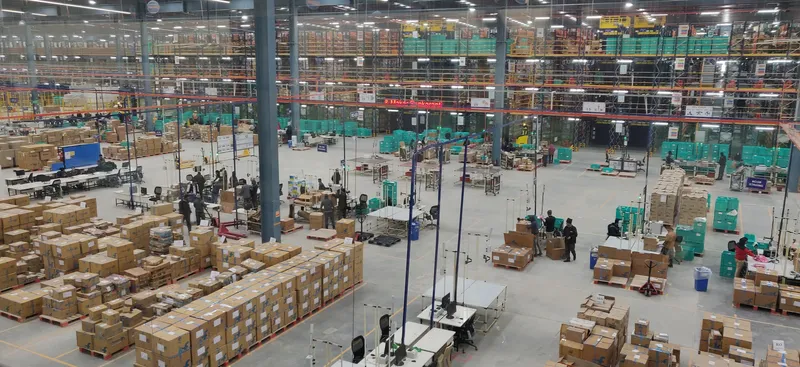Flipkart expands supply chain infrastructure to meet festive season demand
Flipkart is expanding its supply chain infrastructure as it sees more number of consumers and sellers coming onto its platform from Tier II and beyond locations
Flipkart, India’s leading ecommerce marketplace, has expanded its supply chain infrastructure as it gears up to meet the demand from the festive season sale. As part of this process, it has increased its last-mile reach with more than 3,000 facilities across the country.
According to Flipkart, this expansion will help the sellers, MSMEs, and artisans from smaller towns to connect with a pan-India consumer base through its supply chain.

Flipkart fulfilment centre (Image courtesy: Flipkart)
Overall, Flipkart has added over 3.4 million sq ft space across its supply chain assets including fulfilment centres, mother hubs, and delivery centres throughout the country. The fulfilment centres span across an area of up to five lakh sq ft each.
The total warehousing space for Flipkart now totals to over 18 million sq ft in addition to lakhs of square feet of assets from partner brands. This has been further strengthened with the onboarding of over 50,000 kiranas across the country, which will help manage a higher number of shipments during the festive season, the company said.
Amitesh Jha, Senior Vice-President, Ekart and Marketplace, Flipkart, said,
“The pandemic has accelerated the expansion of our supply chain across the country, particularly smaller cities, to meet growing demands for ecommerce services. Also, keeping in mind the growth of ecommerce over the next few years, this expansion will enable us to connect millions of consumers across the country with lakhs of sellers and artisans in a fast and efficient manner.”
Flipkart said the additional space and infrastructure will also boost local employment. This festive season, the ecommerce company is creating nearly 70,000 direct jobs and lakhs of indirect jobs through its pan-India supply chain.
According to Flipkart, the COVID-19 pandemic has accelerated the transition of consumers and sellers from Tier-II and Tier-III markets to ecommerce. The company’s expansion of supply chain in these regions ahead of the festive season is expected to create a win-win situation for consumers, sellers, artisans, and other ecosystem partners.
Edited by Megha Reddy



![[Podcast] Scale lessons from Flipkart's engineering and strategy heads](https://images.yourstory.com/cs/2/11718bd02d6d11e9aa979329348d4c3e/AccelPodcastFlipkart-0111-1600952945332.png?fm=png&auto=format&h=100&w=100&crop=entropy&fit=crop)




